Chap Q
pter Outlin
Quality Theo What Leadin
Chap
pter 2:
Qualit
ne ry is Theory? ng Contribu
W. Edwar
Joseph M. Kaoru Ishi Armand F
Viewi Resolv
Over discu is ma also m He lin Theo
rview
When the usses the maj ade that “ther makes a state nks quality i ry Z for that
Philip Cro Genichi Ta The Rest o ing Quality f ving the Dif e author discu jor “players” re is not a un ement that q improvemen t matter).
utors to Quali d Deming Duran ikawa eigenbaum osby aguchi of the Pack from a Conti fferences in Q usses theory ” and their co nified theory quality impro nt to the class
ity Theory ingency Pers Quality App y, he is not b ontributions y explaining ovement is p sic Theory X
Theo spective proaches: An eing philoso to the subje quality imp positively lin approach t
n Integrative ophical; rathe ect. On page rovement.” nked to empl to managem













1 of 1 Approach er he 26, the poin The author loyee morale ent (and
nt e.


cussion Qu
uestions
1. De chain
efine theory n?
The a quest
author states tions: What? How? Why? Who? Where? When?
How defin
. Why are t that in orde
heories imp
portant for m
managing q
quality in th
does practic nition of theo
ce relate to t ory that we h
er for a theor theory? You have studied
ry to be comp
plete, it has
to answer th
The m betwe statis
model the tex een Quality tical researc
xt presents i Improvemen ch. This will
s illustrated nt and Work either prove
might also a in other disc in Figure 2ker Morale. T e or disprove
ask how this ciplines.
-1. A positiv
s relates to th
Page 2 of 1 he supply hese he classic
ve correlation e model, we
To verify the e the theory.






2. De theor organ
escribe the d ry based sol nizations, w
differences b lely on your would you be
between ind r experience e basing you
duction and es of quality ur theory on
d deduction. y practices in n induction
If you deve n business n or deductio
On pa Cubs induc class
Y, an
age 25, the t won the Wo ctive or dedu ’s perspectiv nd Z – are th
text discusse orld Series. M uctive? What ve. If one loo ey individua


es a Morale C Morale is fo t are exampl oks at the cla ally inductiv
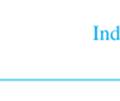
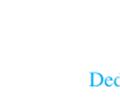
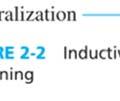
Check at a C ound to be po les of induct assic theorie e or deductiv

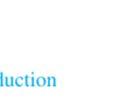

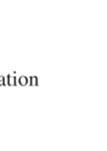
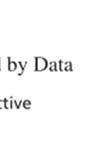
Chicago-base ositive. Stud tive and dedu es – Evolutio ve?
ed company dents must de uctive theory on, Relatively
ucation, Inc.
n is presente conduct eloped a on? Why? just after the ecide: is this y from the y, Theory X
ed e s X,
If the theor the ca or ind
e theory is ge ry is develop ase the Cubs ductive?
enerated by o ped through t s just won th
3. Do possi
o you believ ible? What
e that the d is a unified
observation the Scientific he World Ser evelopment theory?
and experien c method, it ries apply? D
t of a unified
nce, the theo is deductive Does this ma d theory of
ory is induct e. Does the f ake the theor quality man
Page 3 of 1
On pa differ quest
age 26, “A C rent approac tion to keep
Closer Look ches to qualit going on the
at Qualityty. As you d e side.
The Produc discuss the ke
ct That is Qu ey players, th
uality” looks this might be
Einst Do un unifie playe affect
4. W work consu
tein spent mo nified theori ed theory for ers, do they a t this situatio hy do mana kbooks, vide ultants? Ho
ost of his lat ies exist in a r quality man all take the s on?
agers need t eos, and so o ow would yo
ter life search any discipline nagement? I same approac to be cautiou on) on quali ou go about
hing for a un e? What wou If you contra ch? Does the us about pu ity managem selecting th
nified theory uld the impl ast the appro e fact that w urchasing m ment from t his type of m
y in physics. lications be i oaches of the we are dealing material (e.g. trainers and material?
tive. If the fact that in ry deductive nagement is at the e a good He failed. if there was e major g with peopl ., courses, d
In the each buzzw Q, an qualit video cours Harv own a have
e quoted arti approach, co words. There nd little q.” A ty initiatives otapes, 10 wo se to teach so
icle, The Pro orporate man e is TQC, TQ
An entire ind s. The Juran orkbooks, a omeone how
oduct That is nagers are co QM, fishbon dustry has sp Institute sel leader’s man w to run the t
s Quality, the onfronted by ne diagramm prung up just ls a $15,000 nual, overhe tapes.
e statement i y a numbing ming, cause a t to provide m 0 do-it-yours ead transpare
is made that g maze of acr and effect, po material to s self kit comp encies, and a
t, “Within ronyms and oka yoke, bi support plete with 16 five-day
ard’s Garvin approach to it developed
n observes th quality. The d in-house.
hat all of the e most effect
Baldrige Aw tive way to d
ward winner develop a so
rs had develo olid quality a
5. Br quali Demi
riefly describ ity managem ing outlined


be the contr ment. Why
14 points fo
ributions W do you belie or manageme
W. Edwards eve he is the ent:
Deming ma e most influ
ade to the fi uential quali
oped their approach is t eld of ity expert?

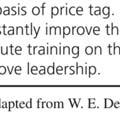
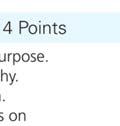
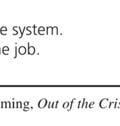

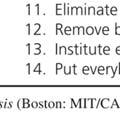


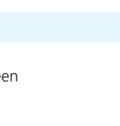

Pearson Edu
ucation, Inc.
In the 1950s, Japanese-made products were frequently called inferior, tinny, and shoddy. Today, names such as Toyota and Sony are equated with high-quality manufacturing.
Deming stressed that consumers are well served by insisting that service and product providers deliver high quality. He believed that the more consumers demand high-quality products and services, the more firms will continually aspire to higher levels of performance. As opposed to 20 years ago, consumers now expect high-quality products at a reasonable cost.
6. Deming believed poor quality was not the fault of workers but resulted from poor management of the system for quality improvement. Do you agree with Deming’s stand on this issue? Why or why not?
Answers here will vary. Some things to consider: Deming raises the topic of “continual, never-ending improvement.” How does this place the responsibility for quality on the shoulders of management? What does this philosophy say about Deming’s general approach to management? A key motivator in our culture is looking for the source of the problem. Deming places the problem in management’s lap.
How do today’s management philosophies either support or deny this approach? Think about Theory X and Y. Research Ouchi’s Theory Z. Also consider Maslow’s hierarchy of needs. Is there commonality in these philosophies?
7. Deming was not an advocate of mass inspection as a means of ensuring product quality. Please explain Deming’s beliefs in this area.
Taken out of context, the statement is curious. However, from page 29, we read: “Eliminate the need for inspection on a mass basis by building quality into the product in the first place.”
Is Deming discussing the place that quality must have in the general context of the process? Is quality a feature that you add on at the end of the process? How revolutionary is this statement? How does the popular literature about management address this attitude? If you tie this back to the discussion of Jack Welch in Chapter 1, the importance of visionary leadership is identified. Goldratt1 discusses the theory of constraints. He says that constraints, or bottlenecks, affect the flow of product through the system. Can quality be a constraint?
8. Select one of Deming’s 14 points for management and describe how this point could have resulted in quality improvements in a business or volunteer organization with which you have been involved.
Every successful manager can point to failures in his or her past. The difference between a successful manager and an unsuccessful manager is how he or she reacts to those
1 http://www.goldratt.com/
failures. Although this concept is seldom discussed, writers like Deming and Juran are sharing the remedies, either made or observed, to past failures.
The success of these writers is based upon the fact that they can help the new manager avoid the common, but not obvious, pitfalls. Any person who has had a position of authority should be able to read Deming’s list and identify a mistake that was made relating to each one. This should prove to be a fascinating classroom session, especially if the professor joins in the discussion and adds his or her own experiences.
9. Briefly describe the contributions that Joseph M. Juran made to the field of quality management. What do you believe was Juran’s most significant contribution?
Juran discusses three processes: planning, control, and improvement. He states that these processes are sequential: first planning, then control, and then improvement. Juran’s emphasis is on continued improvement – control, not breakthrough. Juran uses Pareto’s law, the 80%/20% rule, to identify the quality problems.
10. Is the concept of scientific management compatible with employee empowerment? Why or why not?
Frederick W. Taylor launched scientific management. It separated planning from execution. Taylor gave the planning function to managers and engineers. He limited supervisors and workers to the function of executing the plans. The result of the “Taylor Revolution” was centralizing the quality function. How does this approach fit within the framework established by Deming? Taylor published his treatise in 1911. How has the culture of the workplace evolved since then?
11. Does the phrase “quality is the responsibility of the quality department” reflect a healthy perspective of quality management? Please explain your answer.
This revolves around the question, “Whose job is quality?” By centralizing quality, Taylor removed it from the day-to-day operation of the company. As the topic of quality is removed from the production floor, what is management’s response going to be? If we look back at Juran, is this now a control or a breakthrough function? Why?
Taylor notes that by delegating quality to the quality manager, the line supervisors and managers could devote their own time to other matters. As they did so, they became progressively less and less informed about quality. When a quality problem developed, management lacked the expertise needed to choose a proper course of action.
12. Briefly describe the Japanese quality revolution following World War II. What can modern day managers learn from studying the history of this era?
After the war, the industrial leaders in Japan turned their attention toward improving the quality of Japanese manufactured goods. The quality revolution in Japan was initiated through the following steps:
They sent teams abroad to learn how foreign countries achieved quality.
They translated foreign literature into Japanese.
They invited Deming to lecture in Japan and listened carefully to Deming's views on quality.
To the credit of the Japanese people, they implemented what they learned about quality management, and in many cases, eventually improved on what they learned. The result was a virtual quality revolution in Japan in the years following World War II.
13. What was Joseph Juran’s primary contribution to quality thinking in America? Discuss Juran’s three-step process to improving quality.
Juran’s three-step process was:
Planning
Control
Improvement
This three-step process emphasized control over breakthrough. This was a major step towards ongoing quality improvement, rather than mass inspections. This approach moved the process of quality to the lowest possible level.
14. Hothouse quality refers to those quality programs that receive a lot of hoopla and no follow-through. Provide several examples of management practices that can lead to hothouse quality. How can hothouse quality be avoided?
Management practices that are focused on achieving short-term objectives and/or immediate results are susceptible to hothouse quality. Hothouse quality programs often promise dramatic increases in performance over a relatively short period of time.
Consistently productive decision makers typically see this as an unrealistic goal, and avoid these types of programs. Less successful decision makers and decision makers desperate to see quality improvement quickly may be more prone to investigate these programs.
15. C mana persp
Compare an agement. W pectives?
d contrast D What are the
Deming’s, J
e major simi
Juran’s, and ilarities and
d Crosby’s p d difference
perspectives s between th
Page 7 of 1
Demi qualit oppo the re produ Juran result many Crosb depar succe of pro mana impro
ing addresse ty is not the sed the creat esponsibility uct. n's work focu t of insuffici y of the impl by made two rtment, and n ess of the thr ofit for an or agement, and ovement rath
Simil organ addit and e Diffe Crosb appro advoc terms series
larities: All t nizations, an ion, all three effectiveness
erences: Dem by. The each oaches. Cros cated by Dem s of the prod s, etc.).
16. D pract Tagu Table
Describe Tag tical applica uchi method
ed the entire fault of the tion of quali y of the quali uses on the i ient and inef lementation o key points not the indiv ree. First, he rganization. d emphasized her than stati three men w nd felt that qu e of them saw s. ming and Jur h emphasized sby's zero de ming or Jura duction of qu guchi’s pers ations? If yo d? Why?
e 2-4 on pag

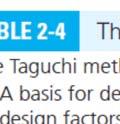
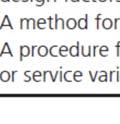
process and worker, but ity inspection ity inspectio
d focused prim is the fault o n departmen n departmen
dea that orga ffective plann issues involv
anizational q ning for qua ved with qua
in his argum vidual worke argued that Second, Cro d the behavi istical appro were very pas uality is a pr w quality as ran were mor d different a efects approa an. Crosby w uality-related
ments about t er. Crosby ha quality, as a osby adopted ioral and mo oaches.
marily on th of the system nts. He felt th nts. It should quality probl ality. In addit ality through the responsib as enjoyed th a managed p d a "zero def otivational as ut the role of must be delib oint for organ
he assertion t m. Deming a hat quality sh d be built int lems are larg tion, Juran f h his trilogy.
bility of the he most com process, coul fects" approa spects of qua
spective of i ou were a m
ssionate abou rocess that m the focal po re statisticall aspects of qu ach probably was also mor d materials (e ideal quality manager, wo
ly oriented i uality manag y goes furthe re prolific th e.g., videos, y. Does this ould you con
e 37 provide
es an overvie
ew of the Ta
aguchi metho
f quality in b berately man nizational pe in their appro gement in the er than would han Deming a workbooks, perspective nsider using od.
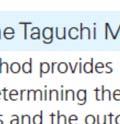
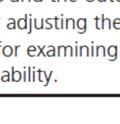
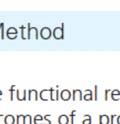
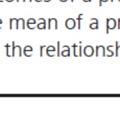
Pearson Edu
ucation,
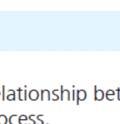


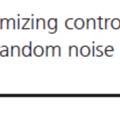
s of quality heir that poor also strongly hould not be to the gely the fleshed out . quality mmercial ld be a sourc ach to qualit ality business naged. In erformance oach than eir d be and Juran in , lecture e have g the
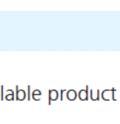
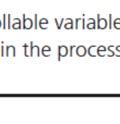
y e


Taguchi accomplishes these steps by emphasizing a three-fold approach to quality:
The definition of quality
The quality loss function
The concept of robust design
A key element of the Taguchi concept is that of robust design. This states that products and services should be designed so that they are inherently defect-free and of high quality. Taguchi sets his target high. The overall effect of this is desirable and accomplishable.
17. Why do you think that reengineering programs have such a high failure rate? Can you think of ways to improve the success rate of reengineering programs?
Reengineering bypasses the analysis and design steps and tries to piggyback on the past successes of others. Reengineering programs have experienced a high failure rate primarily because they tend to oversimplify extremely complex organizational issues, and as a result, do not focus managers on the attention to detail and analysis that is necessary to effect meaningful (and effective) organizational change. Reengineering programs would probably be more successful if they were combined with more traditional and well-founded approaches to effective organizational change.
18. Describe how the contingency perspective helps us understand why a single approach to quality management may never emerge.
The text states that firms that are successful in quality do not adopt a blanket “Deming approach to quality.” These firms utilize the applicable approaches that help them improve. The author discusses this as the contingency perspective
The direction is that different quality problems mandate different quality improvement approaches. On page 40, the author states: From your own perspective, you need to make correct quality-related decisions. In doing this, you should consider the different quality experts in this chapter and choose those concepts and approaches that make sense for you.
19. How can a philosophy of quality improvement help a firm in its overall efforts of improving the quality of its products and services?
The one common element of all these approaches is that quality cannot be an adjunct to the process. Quality must be an integral part of the development. For this to happen, a philosophy of quality improvement must be ingrained into the corporate culture. The point is made that quality starts in the design phase and continues through the product manufacture
Any major change to a corporate culture must have full support from top management. Quality is not any different.
20. Do you believe that CEOs and business managers should be skeptical about the quality movement, or should they embrace the quality movement and try to involve their firms in as many quality initiatives as possible? Please explain your answer
The key to this question may be the phrase "as many quality initiatives as possible." Any project requires planning. The more of an effect a project will have on a firm, the more careful the planning must be. Integrating a quality program is no exception. Every part of the firm is affected. Poor planning can be disastrous.
Case
e 2-1: Rhe
aco, Inc.:
Discu
1. Ma for a askin out a
Many probl
Many
ussion Ques any compan dvice. In yo ng for timely an agency lik y companies lems that no of Deming’s 1

Adop pride some
stions:
nies fail in t our opinion, y advice? If ke the ARR
Making a heir efforts , what are s f you were a RI?
s get into “fir one has tim 14 points speak



re fighting m me to dig into
Quality T to improve ome of the r a manager a mode.” They o the cause o
k to this proble
m:



pting a new p (point 12), etimes leader
Firms mana encou A firm probl
2. Di help First, roadm Rhea manu empo imple Rhea receiv chang



philosophy ( all seem to b rship does no
s can be insu agement part uraging emp m such as A lem is findin scuss ARRI Rheaco imp
Copyr
Turnabout e quality wit reasons tha at Rheaco, w
y are so busy f the problem



(point 2), dri be based on p ot realize tha
ulated. Cultu ticipates in p ployees to co ARRI can be ng out that th
ures can be s professional ontinue their in the vangu hey exist.
I’s recomme prove its pr
endations to oduct quali
, AARI helpe map for Rhe aco implemen ufacturing, ju owerment. T ement the re aco itself. Oth ving, invento ges had a pro Pearson Edu
ed Rheaco d aco's improv nt several sta ust-in-time in hrough this commended her improve ory control, ofound influ ucation, Inc.
byAsking f thout ever h at inhibit fir would you h y solving imm ms.




iving out fea point 7, imp at they are th stagnant. One organization education an uard of conce o Rheaco. H ity?
develop an E vement effor andard quali nventory con process, AA d initiatives a ements were and human r uence on Rhe

ar (point 8), a prove leaders he roadblock
and remove ship. The pro ks.
e solution is ns. Another and bring in i eptual devel
How did thes
s ensuring th solution mig ideas from th lopment. The se recomme
Enterprise Ex rts. Consiste ity improvem ntrol, total q ARI worked i and to gradu made, partic resource ma eaco's ability
xcellence Pla ent with this ment program quality mana in partnershi ually turn ove cularly in the anagement. C y to improve
for Advice having aske ms from have sought mediate barriers to oblem is tha hat ght be heir classes. e major endations
an, which ac effort, AAR ms, includin agement, and ip with Rhea er the chang e areas of sh
Collectively, e its product
e d at
cted as a RI helped ng cellular d employee aco to e process to hipping and , these quality.
A key statement is made on page 46: After ARRI had been working with Rheaco for a period of time, the company started identifying and correcting problem on its own, which is exactly what is supposed to happen.
People want to succeed. In an environment where success is rewarded, people will thrive and bring the company along with them.
3. ARRI’s initial evaluation of Rheaco indicated that Rheaco’s employees, despite the company’s difficulties, had an overall positive attitude. Do you believe that this factor contributed to ARRI’s ability to provide Rheaco advice? Why or why not?
Most students will say that the attitude of Rheaco's employees was a significant factor in AARI's ability to provide Rheaco advice. As discussed in Chapter 1, it is impossible to implement quality without the commitment and action of employees. Because Rheaco's employees had a positive attitude, the company started its quality improvement efforts with one major obstacle already overcome. It would have been much more difficult for Rheaco to accomplish what it did if it would have had to first convince its employees that it was doing the right thing.
However, it is important to understand why the employees’ morale was positive in the first place? How does management style enter into this? Could this enterprise have been possible if management did not establish a positive environment? Figure 2.6 on page 44 identifies the role of leadership. In this diagram, everything revolves around leadership.
Case Man Discu
e 2-2: Has nagement?
Disney De ?
eveloped a
Theory of
Quality G
ussion Ques
1. Is appr answ Befor Disne was t proce
Disney’s lev ropriate, or wer.
stions: vel of emph does the com
All su contin
2. Is beha
re Disneylan ey saw the n the very first ess. uccessful the nuously emp it appropria ave in a them
On pa


The t
nd, carnivals need for a fam t theme park
eme parks ha phasizes the
asis on anti mpany expe s had a reput mily-friendly k. The succes ave followed value of cus
ate to think me park or a ext discusses
cipating the end too muc
ation as bein y wholesom ss of Disney
d the Disney stomer satisf
Page 12 of 1 vices
Guest Serv of its guests this area? E
k in terms of any other se s this topic th
f developing etting? If so
e behavior o ch effort in ng seedy and e theme park yland and Dis y model. Dem faction. The g a “theory” o, why?
d unscrupulo k. In fact, Di sneyworld ju ming’s 14 po guest is the ” of how gue
Explain you ous. Walt isneyland ustifies the oints customer. ests will 13 ur
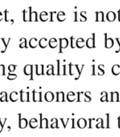
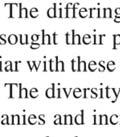

age 26 the te text goes on

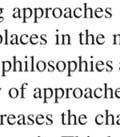
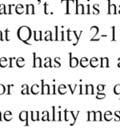

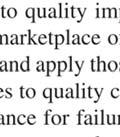

to discuss th
husly:



his topic in A
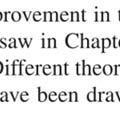
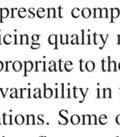
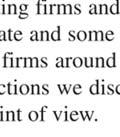
A Closer Loo
ok At Qualit

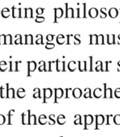

ty 2-1:

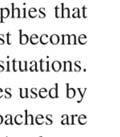

ucation, Inc.


Is the the w
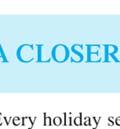



ere a differen way a superm
3. Th met? beha This have that v paren
An in other

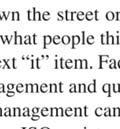


nce between market arrang
hink about t ? Did you ha avior of the g question can at theme par value was the nts, children, nteresting asp r Disney effo


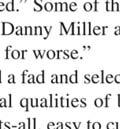
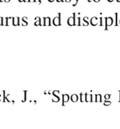
the way the ges their she
the last time ave a sense t guests? If so
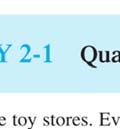
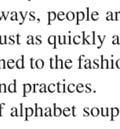


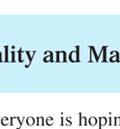

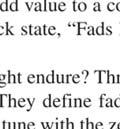

eme parks an lving display
e that you vi that the ope o, provide s
n best be ans rks? Theme ere? Will the , or subsectio
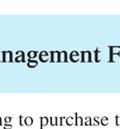

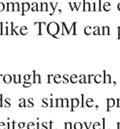
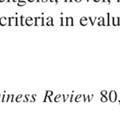
nticipate thei y to optimiz
isited a them erator of the ome specifi
me park. W e park attem c examples.
swered on a p parks are no ey return? W ons of the po
personal bas ot inexpensiv Who is the au opulation?
sis. What exp ve places. W udience that
pect is the q orts?
question: Wh
hy was Disne
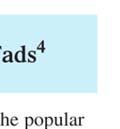
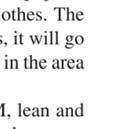
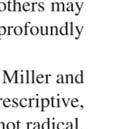

13 of 1 havior and xpectations ticipate” th
Were your ex mpts to “ant . periences di Was the gener the theme pa s not as succ
eyland, Paris ir guests’ beh ze sales?
id the class ral consensu ark targets: cessful as
e us
















